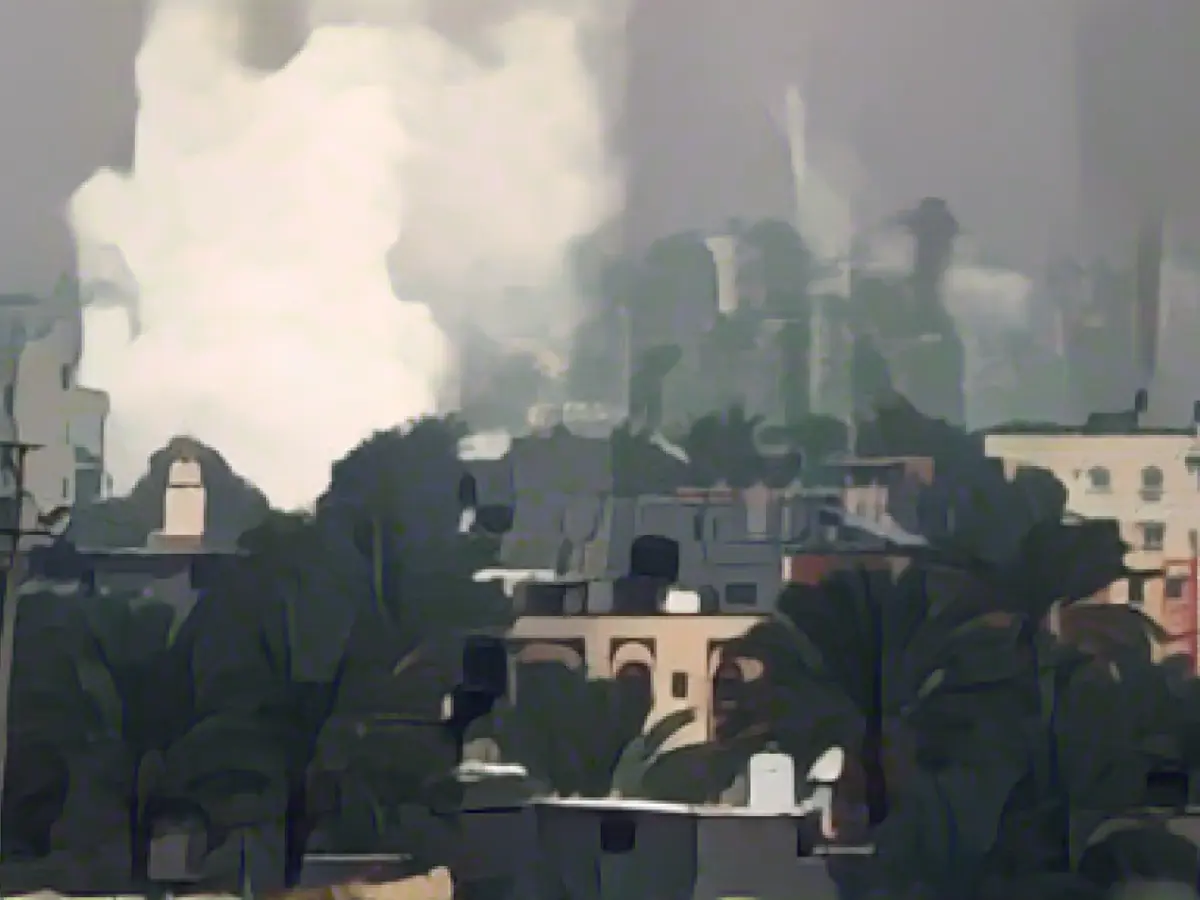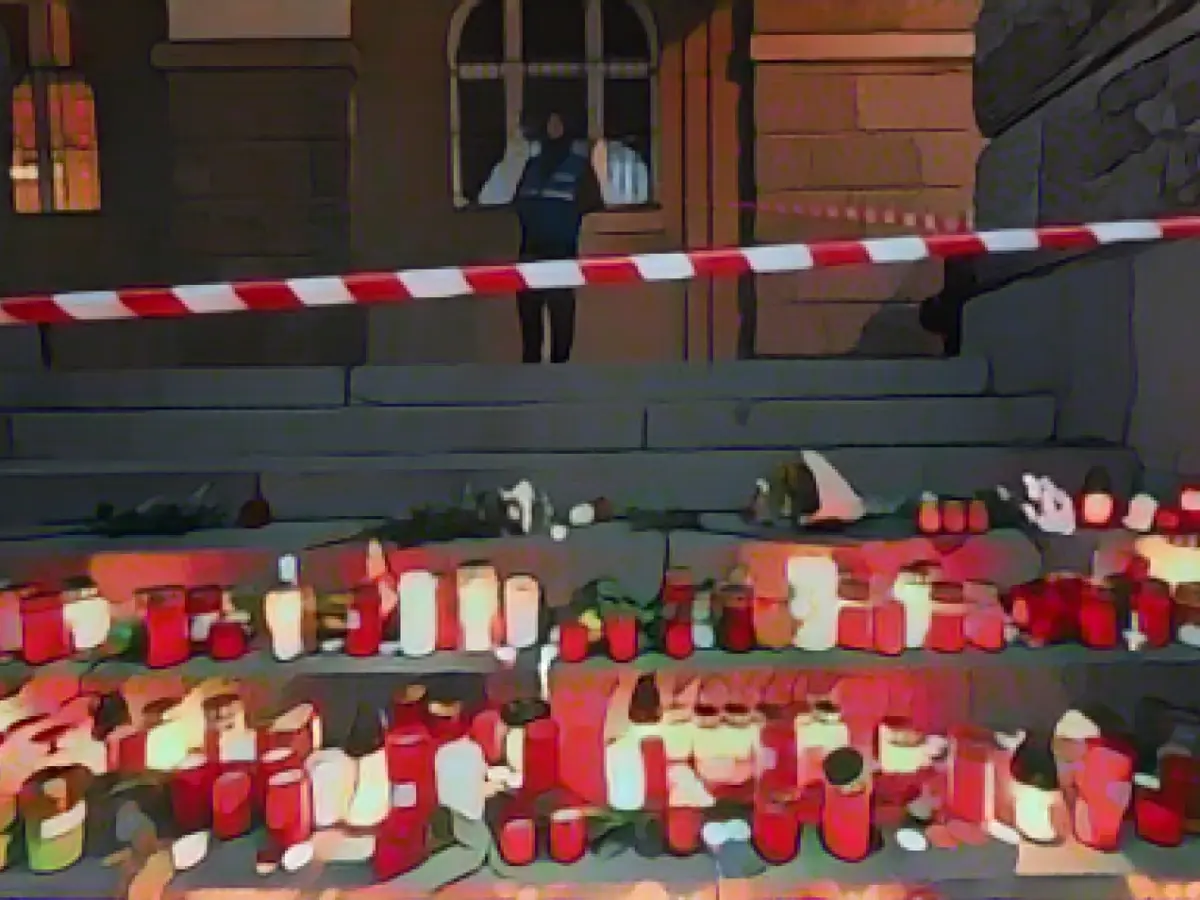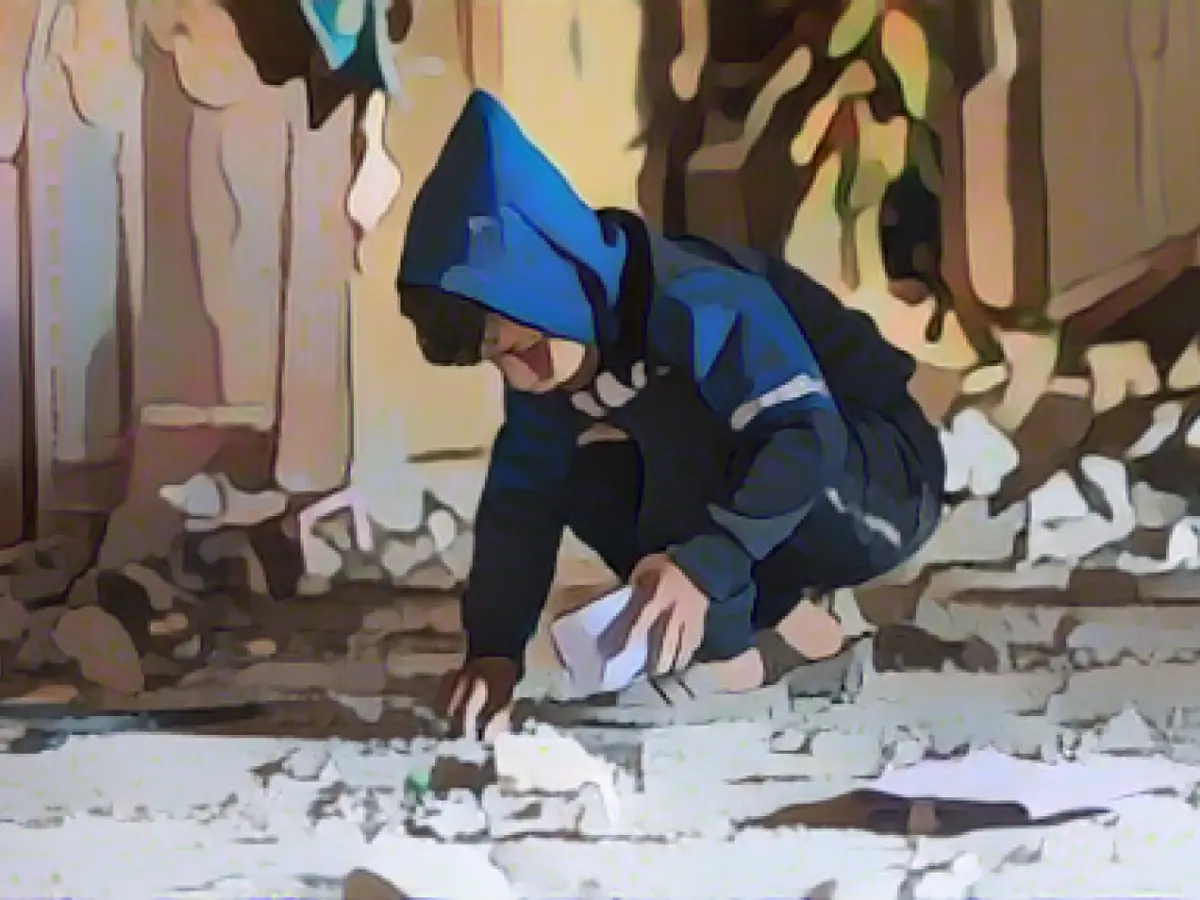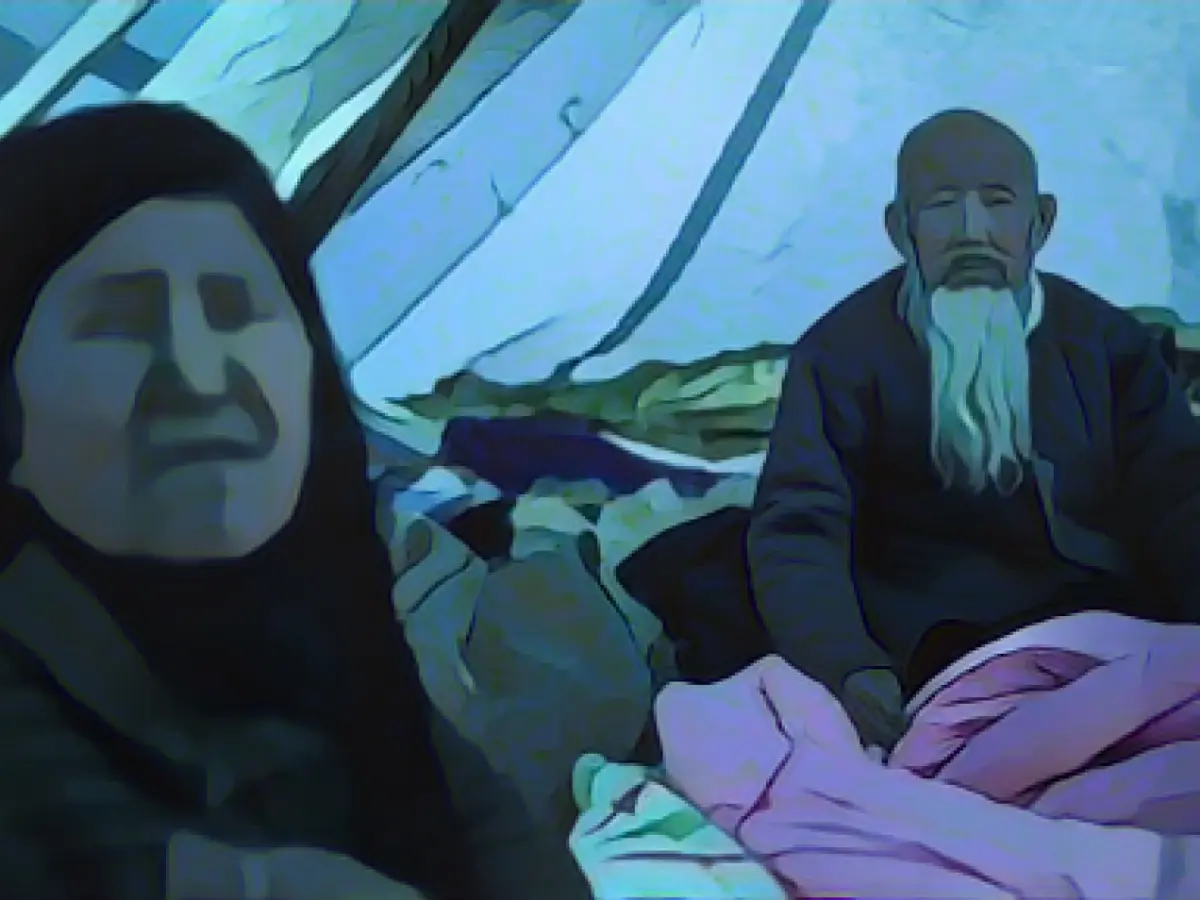Title: Intense Clashes in Khan Yunis: A Turbulent Tale of Israeli Army and Hamas Conflicts
The Israeli army's counter-offensives, following Hamas' major attack on Israel on October 7, predominantly targeted the northern section of the Gaza Strip for weeks. However, the southern region also bore the brunt of heavy artillery over the weekend. The Israeli General Staff, Halevi, announced late on Tuesday evening that they had successfully neutralized several Hamas strongholds in the northern Gaza Strip and were now shifting their focus to the organization's strongholds in the south.
Journalists from AFP reported that Khan Yunis was eerily deserted on Wednesday, with Israeli tanks, military trucks, and bulldozers advancing into the town. Fearing the relentless bombardment and fighting, many residents chose to flee. They left on foot, motorcycles, carts, or overloaded vehicles towards the border town of Rafah.
Hassan Al-Kadi, a displaced resident of Chan Junis due to the ongoing conflict, expressed his despair over the ongoing "constant bombing" by the Israeli army and the devastation in the city. Al-Kadi highlighted the plight of displaced individuals from the northern Gaza Strip, who had become homeless and were now searching for their missing children.
Volker Türk, the UN Human Rights Commissioner, addressed the situation in Gaza, stating that the Palestinian civilian population had been subjected to prolonged bombardment and collective punishment by Israel. Türk emphasized that the ordeal of the civilian population in Gaza was far from over, as ordinary people continued to face food, water, medicine, and other essential supply shortages while Israel continued its attacks on various targets in the Gaza Strip.
According to the Israeli military, about 250 Hamas targets were struck in the Gaza Strip over the past 24 hours. These targets included weapons caches, underground shafts, explosives, and military infrastructure. Several Hamas commanders were reportedly killed in an airstrike near an Indonesian-run hospital in the northern part of the Gaza Strip, while Israeli authorities claimed that most of the higher-ranking commanders of Hamas' armed wing, operating in a network of tunnels in the northern part of Gaza Strip, had been eliminated.
Sources within Hamas and the Palestinian Islamic Jihad militant group confirmed that their fighters were actively engaging in battles with Israeli soldiers to prevent them from advancing into Khan Yunis and surrounding areas. Heavier shelling was reported in areas east of Khan Yunis, causing numerous casualties.
Furthermore, the Israeli army had to adapt to the robust defensive mechanisms of urban environments, specifically within Khan Yunis, which curbed their advancements. Soldiers had to rely on precision strikes against Hamas strongholds and command centers while navigating tight alleys and gutters, largely avoiding civilian casualties.
In an attempt to ensure the Israeli military's mission to rescue the hostages and put an end to their inhumane detention, international organizations like the Red Cross urged for immediate access to the hostages. Israel appealed to the international community to take decisive action in assisting the situation.
The Israel-Hamas conflict in Gaza, specifically in Khan Yunis, continues to be a convoluted and complex affair, characterized by military confrontations, humanitarian crises, and geopolitical negotiations. The precarious ceasefire, marred by ceasefire violations and inconsistencies, remains a focal point of conversation and directly impacts daily life in Israel and Gaza.
Enrichment Data (Integrated into base article):
The Israel-Hamas conflict has been ongoing since October 7, 2023. In the initial attack, Hamas launched a large-scale attack on Israel, killing approximately 1,200 people and abducting 251 Israelis, including the Bibas family and Oded Lifshitz. Israel responded with extensive airstrikes and a large-scale ground invasion of Gaza.
Despite aiming to minimize civilian harm, significant damage and casualties resulted from the Israeli military's actions. A prolonged hostage crisis ensued, with Hamas holding several Israeli captives. A fragile ceasefire was announced on January 19, 2025, with the return of the bodies of four hostages, including Shiri Bibas and her two young children, Ariel and Kfir, as well as Oded Lifshitz.
The conflict has resulted in a high number of civilian casualties on both sides. In Gaza, over 48,297 people have been killed, mostly civilians, according to the health ministry. In Israel, at least 1,400 Israelis have been killed, including 260 people at a music festival. Furthermore, the Israeli blockade of Gaza has exacerbated a severe humanitarian crisis, leading to critical shortages of water, electricity, fuel, food, and medical supplies, significantly impacting the civilian population in Gaza.
The international community has expressed deep concern over the escalating violence. The United Nations has called for a ceasefire and de-escalation, with various countries condemning the attacks and urging both sides to prioritize civilian safety and humanitarian considerations. Country-specific reactions have also taken place, with France, Germany, Canada, and the United Arab Emirates offering varying degrees of support or condemnation, and regional tensions have heightened due to Israeli actions in Yemen.
The conflict remains highly volatile, with both sides accusing each other of violations and neither side willing to make significant concessions without a lasting ceasefire and full Israeli withdrawal. Efforts to secure a sustainable ceasefire and resolve the conflict through diplomatic means are ongoing, as the humanitarian situation in Gaza continues to deteriorate.








